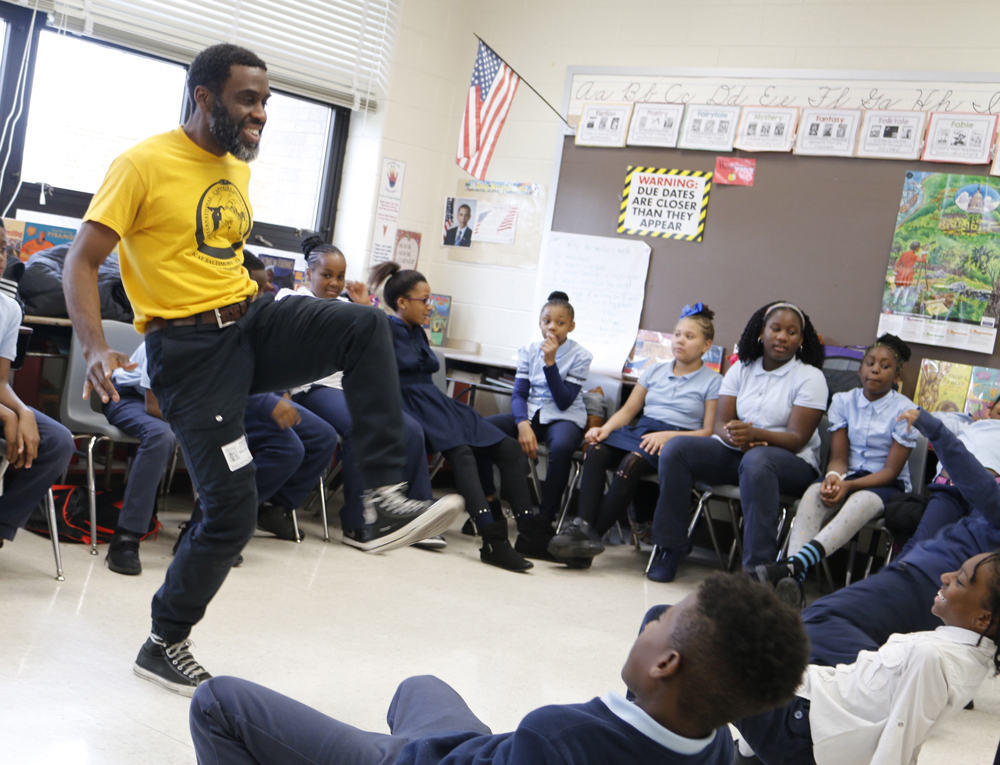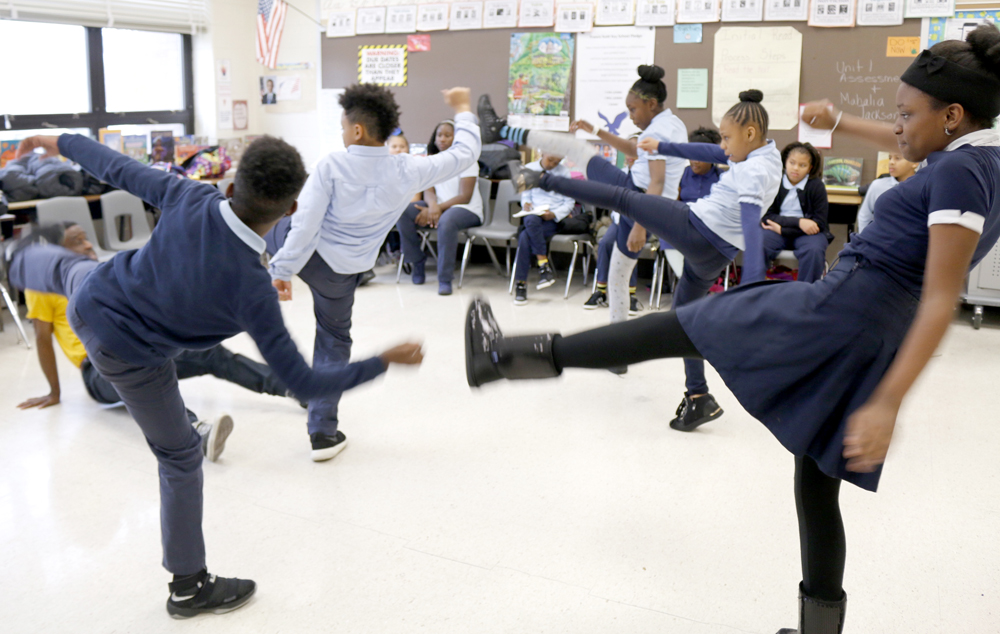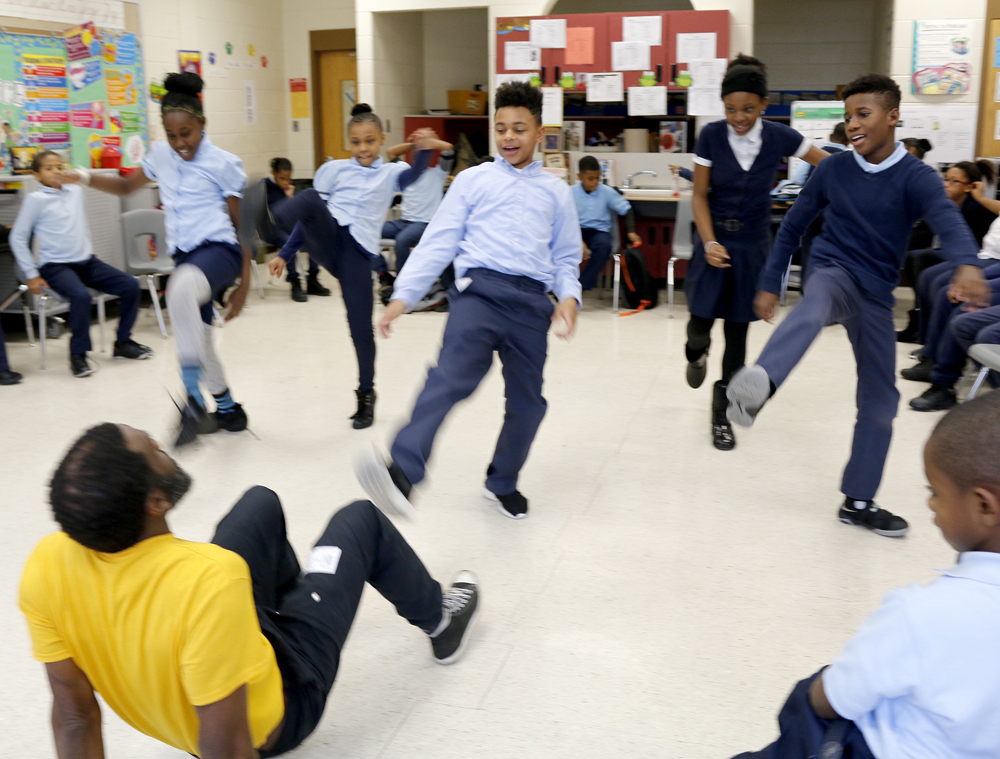Blog

The Inclusive Classroom: Speaking With Our Bodies
Skher Brown teaches world cultural awareness, body coordination and interpersonal skills through the basics of Capoeira Angola, an African-Brazilian martial art form that is a blend between a dance, game, and self-defense. In his new residency, Capoeira Speaks: Dancing for Social Intelligence and Life Success Skills, students develop non-verbal communication skills through body language and kinesthetic movement. This residency is well-suited for inclusive learning settings and those with behavioral, social, emotional, and/or physical disabilities.
“Over 90% of all communication is nonverbal, yet far too little focus is placed on teaching our children how to empathize with others and build relationships. Capoeira Angola is a non-verbal language that uses our bodies to speak instead of our mouths.”
Social intelligence affects how students manage their own behavior, their decision-making process, and how well they are able to navigate social situations. It is, along with academic achievement, one of the greatest predictors of success. Learning to read and respond to body language helps students learn to communicate more effectively, strengthening their social intelligence, thus increasing their chances of success.
“C
apoeira Angola creates a culture of being more aware of one another. It’s communicating all at once with everyone in the room,” Skher explains. “I will say with my movement, ‘I’m about to ask you a question, I need an answer,’ and the student will respond with his or her choice of movement–the ‘answer’. Over 90% of all communication is nonverbal, yet far too little focus is placed on teaching our children how to empathize with others and build relationships. Capoeira Angola is a non-verbal language that uses our bodies to speak instead of our mouths. Once students learn the movements, they come together and begin to have a conversation.”
Capoeira requires students to be very expressive with their entire bodies, including their faces. Participants smile, open their eyes wide, and use animated gestures. These movements help students connect with their own emotions, which translates into being able to recognize and connect to the emotions of others.
“Students take ownership of the new community culture and protect it.”
In Skher’s residency, students take turns observing one another performing the dance movements of Capoeira. “After the dance routine, we form a large circle for participants to look at one another using eye contact. Here, students express what positive observations they noticed about their partners. Then, students share how it felt to give and receive positive reflections. Invariably, though the expressions might start out a little stiff, the mood and classroom environment always turns into a welcoming and connected space. Students take ownership of this new community culture and protect it.”
Skher Brown is one of nine selected roster artists who received training in a variety of inclusion tactics to utilize in the classroom through the Inclusive Allies program in partnership with Disability Rights Maryland. Learn more about our programs for students with special needs and the work we are doing to ensure that all students receive the many benefits of engaging and inclusive arts-integrated classroom experiences.













